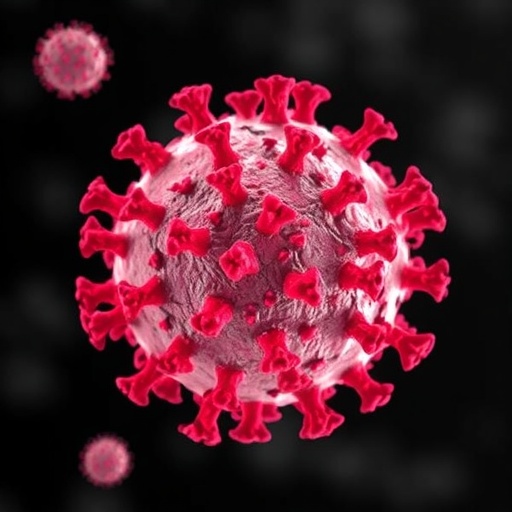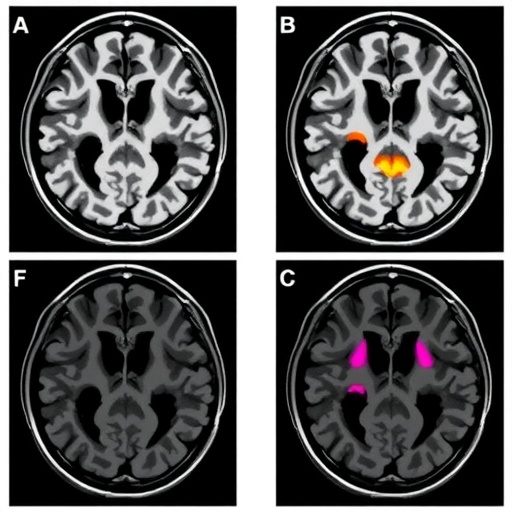
In the relentless pursuit of more effective cancer therapies, a novel approach combining palliative irradiation with targeted molecular inhibition is emerging from recent clinical trials. A groundbreaking study published in Nature Communications by Dillon, Patin, Mohammed, and colleagues unveils promising results from the phase Ib segment of the PATRIOT trial, specifically Part C, which explores the synergy between palliative radiation and ATR inhibition in cancer treatment. This innovative therapeutic strategy aims not only to curtail tumor progression but also to activate the immune system in a manner that could redefine palliative care paradigms in oncology.
Radiation therapy has long served as a mainstay in cancer management, primarily designed to induce DNA damage within tumor cells, resulting in apoptosis or mitotic catastrophe. However, the immunological consequences of radiation are nuanced and complex, often limited by the tumor’s intrinsic ability to repair DNA damage and suppress immune responses. The study’s central focus is on ATR (ataxia telangiectasia and Rad3-related protein), a pivotal kinase in the DNA damage response pathway that facilitates repair and survival of damaged cancer cells. Inhibiting ATR sensitizes tumor cells, amplifying the damage inflicted by radiation while potentially triggering immunogenic signals that bolster anti-tumor immunity.
The PATRIOT Part C trial embarked on investigating whether the integration of ATR inhibitors with palliative irradiation could enhance tumor control while simultaneously activating systemic immune responses in patients with advanced malignancies. This dual-pronged approach seeks to exploit radiation-induced DNA damage exacerbated by ATR inhibition, aiming to overwhelm the tumor’s repair capacity and expose its neoantigens to the immune system. The phase Ib nature of the trial emphasizes safety, dosage optimization, and preliminary efficacy, laying crucial groundwork for potential future phase II/III studies.
.adsslot_bA0CcXwISO{width:728px !important;height:90px !important;}
@media(max-width:1199px){ .adsslot_bA0CcXwISO{width:468px !important;height:60px !important;}
}
@media(max-width:767px){ .adsslot_bA0CcXwISO{width:320px !important;height:50px !important;}
}
ADVERTISEMENT
The clinical trial enrolled patients with a variety of solid tumors that were unresponsive to conventional therapies and deemed suitable for palliative radiation, a treatment primarily intended for symptom relief rather than curative intent. Notably, the administration of the ATR inhibitor was carefully timed and dosed alongside fractionated radiation, a modality that divides the radiation dose into multiple smaller exposures to enhance efficacy and minimize collateral damage to healthy tissue. The study meticulously monitored adverse events, tumor response rates, and immune biomarkers to evaluate the combination’s translational potential.
Intriguingly, the trial exhibited a tolerable safety profile, with manageable side effects consistent with those expected from radiation and ATR inhibition independently. The combination did not exacerbate typical radiation toxicities significantly, suggesting a viable therapeutic window. Importantly, several patients demonstrated meaningful tumor control beyond what would be anticipated from radiation alone, hinting at a synergistic effect. These findings provide a compelling rationale for further exploration of ATR inhibitors as radiosensitizers in clinical settings.
A pivotal aspect of the study pertains to immune activation. Radiation is increasingly recognized not merely as a local cytotoxic agent but as an immunomodulatory tool capable of inducing immunogenic cell death. By disrupting DNA repair via ATR inhibition, double-stranded DNA fragments and cytosolic DNA accumulate, activating the cGAS-STING pathway and subsequent type I interferon responses. These molecular events recruit and activate dendritic cells and cytotoxic T lymphocytes, essential players in mounting a robust systemic anti-tumor immune response.
The researchers measured circulating immune cells and cytokines as surrogate markers of immune activation. Consistent with their hypotheses, the combination therapy led to elevated levels of pro-inflammatory cytokines and an increased presence of activated CD8+ T cells in peripheral blood. Furthermore, analysis of pre- and post-treatment tumor biopsies revealed upregulated expression of PD-L1 and MHC class I molecules, indicative of an inflamed tumor microenvironment potentially more amenable to immune checkpoint blockade.
This immunostimulatory dimension is particularly exciting given the current landscape of cancer immunotherapy, where checkpoint inhibitors have revolutionized treatment but benefitted only a subset of patients. By priming tumors with ATR inhibition and irradiation, the PATRIOT trial posits a strategy to convert “cold” tumors, which evade immune detection, into “hot” tumors that are conspicuous targets for immune destruction. Such an approach could enhance the efficacy of existing immunotherapies or provide standalone benefits in hitherto refractory cancers.
The clinical implications of this research are manifold. For patients receiving palliative radiation, a modality historically confined to symptom management, this combinatorial strategy introduces the prospect of not only alleviating pain and improving quality of life but also achieving meaningful tumor control and systemic immune engagement. This dual benefit elevates the potential of palliative interventions from mere care to genuine therapeutic innovation, blurring traditional boundaries in oncology practice.
Mechanistically, the synergy elucidated by Dillon et al. underscores the intricate interplay between DNA repair pathways and immune surveillance in cancer biology. It places ATR at a nexus where genomic instability, a hallmark of cancer, can be exploited not only to induce lethal damage but also to unmask tumors for immune eradication. This multifaceted role of ATR inhibitors extends beyond radiosensitization to encompass immunomodulation, thereby broadening their clinical utility.
The trial’s success also attests to the feasibility of integrating molecularly targeted agents into radiation oncology workflows. Historically, combining systemic agents with radiation raised concerns about amplified toxicity and logistical complexity. However, the routine clinical management of patients in PATRIOT Part C suggests that such approaches are practical and can be safely scaled, paving the way for more ambitious combination trials.
Looking ahead, the data warrant expanded investigations into optimal dosing schedules, combination partners, and tumor types most amenable to this strategy. Incorporating immunotherapeutic agents such as PD-1/PD-L1 inhibitors alongside ATR inhibitors and radiation may unleash synergistic anti-cancer effects. Moreover, deciphering biomarkers predictive of response could personalize treatment and maximize therapeutic gain while minimizing adverse effects.
Despite promising outcomes, challenges remain in fully harnessing ATR inhibition with radiation. Tumor heterogeneity, adaptive resistance mechanisms, and immune suppressive microenvironments could limit the approach’s efficacy in certain contexts. Comprehensive correlative studies and preclinical modeling must continue to refine patient selection and combination regimens.
This study represents a milestone in merging precision molecular targeting with radiotherapy-induced immune modulation. The demonstration that palliative irradiation—traditionally palliative rather than curative—can elicit both local tumor control and systemic immune activation through ATR inhibition changes the treatment landscape. Such innovation exemplifies the frontier of oncology, where multidisciplinary strategies converge to outsmart cancer’s resilience.
In conclusion, Dillon and colleagues’ phase Ib trial from the PATRIOT consortium paints a compelling picture of the future of cancer treatment. Their findings promise an era where radiation therapy is not just destructive but also instructive to the immune system, where DNA repair inhibition amplifies vulnerability, and where palliative care includes the possibility of meaningful tumor response. The intersection of radiobiology, immunology, and targeted therapy depicted here is a beacon guiding oncology toward more effective, tolerable, and transformative therapies.
As the scientific community digests these preliminary yet groundbreaking results, anticipation builds for subsequent trial phases and wider clinical application. Should these promising signals hold in larger cohorts, patients with advanced cancers may soon benefit from treatments that offer hope beyond palliation—treatments that enlist their own immune defenses to mount a final, hopefully decisive, stand against disease.
Subject of Research: Tumor control and immune activation through combined palliative irradiation and ATR inhibition in advanced cancer patients.
Article Title: Tumor control and immune activation through palliative irradiation and ATR inhibition, PATRIOT Part C: a phase Ib trial.
Article References:
Dillon, M.T., Patin, E.C., Mohammed, K. et al. Tumor control and immune activation through palliative irradiation and ATR inhibition, PATRIOT Part C: a phase Ib trial. Nat Commun 16, 7064 (2025). https://doi.org/10.1038/s41467-025-62249-0
Image Credits: AI Generated
Tags: ATR inhibitor clinical trialcancer therapy innovationscombination cancer treatmentsDNA damage response in cancerenhancing anti-tumor immunityimmunogenic effects of radiationpalliative radiation therapyPATRIOT trial findingsphase Ib clinical trial resultsredefining palliative care in oncologytargeted molecular inhibition in oncologytumor control strategies





